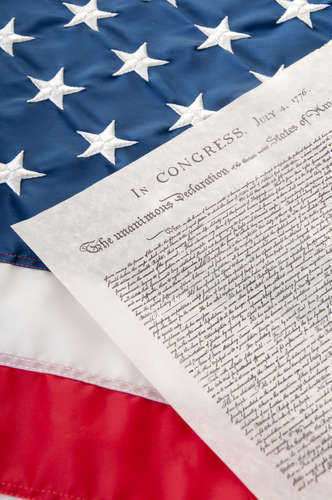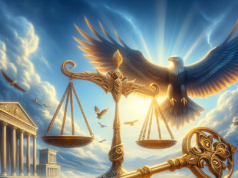Table of Contents
- 1 13th Amendment Simplified and Explained Overview, Related Cases & Decisions, Timeline
- 2
- 3 Overview of the 13th Amendment – Simplified and Explained

13th Amendment Simplified and Explained Overview, Related Cases & Decisions, Timeline
Introduction:
The 13th Amendment, which was ratified on December 6, 1865, abolished slavery and involuntary servitude in the United States. It was a major milestone in American history, and the impact of this amendment continues to be felt today. Since its enactment, the 13th Amendment has been the subject of various legal challenges, leading to several significant court decisions.
In this article, we will explore the ways in which the 13th Amendment has impacted major court decisions since its ratification. We will start by examining the text of the amendment and its significance in American history. We will then move on to a timeline of key court cases that have relied on the 13th Amendment, discussing their impacts and significance.
The Text and Significance of the 13th Amendment:
The 13th Amendment to the United States Constitution states: “Neither slavery nor involuntary servitude, except as a punishment for crime whereof the party shall have been duly convicted, shall exist within the United States, or any place subject to their jurisdiction.” This amendment marked the end of a long and contentious struggle for the abolition of slavery in America, which had been a divisive issue since before the country’s founding.
The significance of the 13th Amendment cannot be overstated. For centuries, slavery had been a fundamental institution in America, with millions of enslaved persons living and working in inhumane conditions across the country. By abolishing slavery and involuntary servitude, the 13th Amendment marked the beginning of a new era in American history, one in which the freedom and rights of all individuals were to be recognized and protected.
Timeline of Major Court Decisions Relating to the 13th Amendment:
1866: Ex Parte Garland
The first significant court case to rely on the 13th Amendment was Ex Parte Garland, decided by the United States Supreme Court in 1866. In the aftermath of the Civil War, Congress had passed the Reconstruction Acts, which aimed to reconstruct the southern states and ensure that they complied with the terms of the 13th and 14th Amendments.
One of the provisions of the Reconstruction Acts required persons who had previously held public office in the Confederacy to take an oath of allegiance to the United States before they could be reinstated. In Ex Parte Garland, a group of lawyers who had previously held Confederate public offices challenged this provision, arguing that it constituted a form of involuntary servitude in violation of the 13th Amendment.
The Supreme Court rejected this argument, stating that the Constitution gave Congress the power to regulate the eligibility of individuals to hold public office, even if this regulation had the effect of limiting their professional opportunities. The Court also noted that the oath of allegiance did not involve the kind of labor or service that the 13th Amendment was meant to protect against.
While the Court’s decision in Ex Parte Garland did not directly affect the abolition of slavery, it was significant in that it established a broad interpretation of Congress’s powers under the 13th Amendment, paving the way for future court decisions.
1873: Slaughter-House Cases
In 1873, the Supreme Court decided the Slaughter-House Cases, which involved a challenge to a Louisiana law that granted a monopoly to a single company for the butchering of animals in New Orleans. A group of butchers argued that this law violated the 13th Amendment by forcing them to work for the monopoly company without adequate compensation.
The Supreme Court rejected this argument, stating that the 13th Amendment only applied to cases of slavery and involuntary servitude, and that the butchers were not being forced into either of these conditions. The Court further held that the 13th Amendment did not grant Congress the power to regulate private industries or businesses, but rather only to prevent slavery or involuntary servitude.
The Slaughter-House Cases set a narrow interpretation of the 13th Amendment, limiting its scope to cases of slavery and involuntary servitude. While this decision was criticized by many at the time, it remained the law of the land until the 20th century.
1896: Plessy v. Ferguson
In 1896, the Supreme Court decided Plessy v. Ferguson, one of the most infamous court decisions in American history. The case involved a Louisiana law that required railroads to provide separate accommodations for white and African American passengers. Homer Plessy, an African American man, challenged this law, arguing that it violated the 13th and 14th Amendments.
The Supreme Court rejected Plessy’s argument, stating that the law did not violate the 13th Amendment because it did not impose slavery or involuntary servitude on any person. The Court also held that the law did not violate the 14th Amendment’s Equal Protection Clause, as long as the separate accommodations provided were equal in quality.
The decision in Plessy v. Ferguson was widely criticized at the time and has been condemned as one of the worst court decisions in American history. It effectively established the doctrine of “separate but equal” that allowed for segregation and discrimination against African Americans for decades.
1954: Brown v. Board of Education
In 1954, the Supreme Court decided Brown v. Board of Education, overruling the decision in Plessy v. Ferguson and effectively ending segregation in public schools. Brown v. Board of Education involved several cases challenging state laws that enforced segregation in educational institutions.
The Court held that segregation was inherently unequal and violated the 14th Amendment’s Equal Protection Clause. The Court also noted that segregation had the effect of depriving African American children of an equal education, which constituted a form of involuntary servitude in violation of the 13th Amendment.
The decision in Brown v. Board of Education was a monumental victory for civil rights and equality in America, and it set the stage for future court decisions that relied on the 13th Amendment to protect the rights of marginalized groups.
1962: Robinson v. California
In 1962, the Supreme Court decided Robinson v. California, a case involving the use of criminal penalties to punish drug addiction. The Court held that this practice constituted cruel and unusual punishment in violation of the Eighth Amendment, as well as involuntary servitude in violation of the 13th Amendment.
The Court noted that drug addiction was a disease and that punishing individuals for their addiction constituted a form of involuntary servitude, as the punishment did not serve any legitimate penological purpose and only perpetuated the harm caused by the addiction.
The decision in Robinson v. California was significant in that it expanded the scope of the 13th Amendment to protect against forms of involuntary servitude that were not related to the traditional understanding of slavery. This decision paved the way for future court decisions that would rely on the 13th Amendment to protect the rights of prisoners and other marginalized groups.
1976: United States v. Kozminski
In 1976, the Supreme Court decided United States v. Kozminski, a case involving a man who had been convicted of holding another man in involuntary servitude for several years. The Court held that the 13th Amendment applied not only to traditional forms of slavery, but also to situations where a person is forced to work under conditions akin to those of a slave.
The Court noted that the language of the 13th Amendment was broad enough to encompass situations where a person’s freedom of movement and choice were severely restricted by another person. The Court also held that the 13th Amendment protected against both private individuals and state actors who engaged in involuntary servitude.
The decision in United States v. Kozminski was a significant expansion of the 13th Amendment’s protections, as it recognized the ability of the amendment to protect against forms of involuntary servitude that did not involve traditional notions of slavery.
Conclusion:
The 13th Amendment has played a significant role in American history, marking the end of centuries of slavery and involuntary servitude and paving the way for the recognition and protection of the rights of all individuals. Since its ratification, the 13th Amendment has been the subject of many legal challenges, leading to several major court decisions that have expanded and clarified its protections.
From the broad interpretation of Congress’s powers under the 13th Amendment in Ex Parte Garland to the recognition of the harm caused by drug addiction in Robinson v. California, the impact of the 13th Amendment on American law and society continues to be felt today. As we move forward, it is important to continue to recognize and protect the rights guaranteed by this amendment, and to work towards a society that upholds the principles of freedom and equality for all.
Overview of the 13th Amendment – Simplified and Explained
Introduction
The 13th Amendment to the United States Constitution is a pivotal piece of legislation that forever altered the course of American history. Ratified on December 6, 1865, this amendment abolished slavery and involuntary servitude in the United States, marking a monumental step toward achieving equality and justice for all citizens. In this article, we will delve into the 13th Amendment, providing a simplified and comprehensive overview of its origins, significance, and lasting impact.
I. The Historical Context
To truly understand the 13th Amendment, one must first grasp the historical backdrop against which it was enacted. The United States, during the 19th century, was deeply divided over the issue of slavery. Southern states relied heavily on enslaved labor for their agrarian economy, while Northern states were increasingly opposed to this institution.
The American Civil War (1861-1865) was the culmination of these tensions, a conflict between the North and the South over issues including slavery. President Abraham Lincoln’s Emancipation Proclamation in 1863 had declared all enslaved people in Confederate-held territories to be free. However, this was a wartime measure with limitations. The true emancipation of enslaved people required a constitutional amendment.
II. The Text of the 13th Amendment
The 13th Amendment is remarkably concise, consisting of only 32 words:
“Neither slavery nor involuntary servitude, except as a punishment for crime whereof the party shall have been duly convicted, shall exist within the United States, or any place subject to their jurisdiction.”
This brief and powerful statement served as the legal foundation for the end of slavery in the United States.
III. Ratification Process
The journey to ratify the 13th Amendment was a long and arduous one. After being proposed by Congress on January 31, 1865, it needed to be ratified by three-fourths (38 out of 50) of the states. By December of that year, 27 states had ratified the amendment. The remaining states, particularly those in the South, were hesitant to accept the abolition of slavery.
However, as the Civil War drew to a close in April 1865, the tide began to turn. The surrender of General Robert E. Lee to General Ulysses S. Grant at Appomattox Court House on April 9, 1865, marked a symbolic end to the Confederate rebellion. This event prompted several Southern states to reconsider their stance on the amendment.
One by one, states began to ratify the 13th Amendment. Mississippi was the first Southern state to do so on February 7, 1865, and Alabama followed suit on December 2, 1865. With Georgia’s ratification on December 6, 1865, the 13th Amendment officially became part of the U.S. Constitution.
IV. Key Provisions
A. Abolition of Slavery
The primary provision of the 13th Amendment is the complete abolition of slavery in the United States. It unequivocally states that “Neither slavery nor involuntary servitude… shall exist within the United States.” This revolutionary change marked the end of a centuries-old institution that had been deeply entrenched in American society.
B. Exception for Criminal Punishment
One noteworthy exception in the 13th Amendment is the clause that allows for involuntary servitude “as a punishment for crime whereof the party shall have been duly convicted.” This exception has been a source of debate and controversy. While it was intended to permit forced labor as part of the criminal justice system, it has been criticized for contributing to the rise of convict leasing and modern-day prison labor.
V. Impact and Significance
A. Immediate Impact
The immediate impact of the 13th Amendment was the emancipation of nearly four million enslaved individuals in the United States. This marked a profound moment in American history, as these individuals were no longer considered property but free citizens with the right to determine their own destinies.
B. Reconstruction Era
The period following the Civil War, known as the Reconstruction Era, sought to rebuild the South and redefine the status of formerly enslaved people. Amendments like the 13th, 14th, and 15th were aimed at securing civil rights for African Americans. While progress was made during this period, it was marred by racial violence and the rise of discriminatory practices like Jim Crow laws.
C. Legal Precedent
The 13th Amendment established a legal precedent for the federal government’s role in combating discrimination and ensuring civil rights. It laid the foundation for subsequent civil rights legislation and landmark Supreme Court cases, including Brown v. Board of Education (1954) and Loving v. Virginia (1967).
D. Continuing Struggles for Equality
While the 13th Amendment abolished slavery, it did not guarantee full equality for African Americans or other marginalized groups. The struggle for civil rights and equal treatment continued throughout the 20th century, with movements such as the Civil Rights Movement in the 1950s and 1960s seeking to address systemic racism.
VI. Modern Implications
A. Criminal Justice Reform
The exception clause in the 13th Amendment, allowing involuntary servitude as a punishment for crime, has raised important questions about the modern criminal justice system. Critics argue that it has been used to justify practices like convict leasing, chain gangs, and modern-day prison labor, disproportionately affecting African American and minority populations. This has led to calls for criminal justice reform and the reevaluation of such practices.
B. Symbolic Value
The 13th Amendment holds immense symbolic value in the United States. It stands as a testament to the nation’s commitment to progress and justice. Its legacy is a reminder of the ongoing struggle for equality and civil rights, inspiring future generations to continue the fight against discrimination and injustice.
VII. Conclusion
In conclusion, the 13th Amendment to the United States Constitution is a landmark piece of legislation that forever changed the course of American history. Its abolition of slavery and involuntary servitude marked a crucial step toward achieving equality and justice for all citizens. While the amendment has had a profound impact on the nation, it also raises important questions about the legacy of slavery and the ongoing struggle for civil rights and equality. It is a reminder that the pursuit of justice is an enduring journey that requires the collective effort of all citizens, both past and present.
The 13th Amendment: Abolishing Slavery and the Road to Freedom
Introduction
The 13th Amendment of the United States Constitution marks a pivotal moment in American history. Ratified in 1865, this amendment effectively abolished slavery and involuntary servitude, a transformational step towards freedom and equality. This article delves into the significance of the 13th Amendment, its historical context, and its enduring impact on the United States. From the abolishment of slavery to its implications for civil rights, we explore how the 13th Amendment laid the foundation for a more inclusive and just society.
Emancipation and the Path to Equality
The 13th Amendment emerged as a direct response to the profound social and moral shifts occurring during and after the American Civil War. Prior to its passage, the institution of slavery was deeply ingrained in the fabric of American society, shaping economic systems and social hierarchies. The Amendment’s language was carefully crafted to ensure that the shackles of slavery were forever removed, marking a significant turning point in the nation’s trajectory toward equality.
The Text of Freedom
The 13th Amendment’s succinct yet powerful text declares, “Neither slavery nor involuntary servitude, except as a punishment for crime whereof the party shall have been duly convicted, shall exist within the United States, or any place subject to their jurisdiction.” This revolutionary statement carried profound implications, as it signaled the end of one era and the beginning of another – a journey towards justice and civil rights.
The End of an Era
With the ratification of the 13th Amendment, the United States officially moved away from the morally reprehensible practice of slavery that had persisted since the nation’s founding. Enslaved individuals, who had endured generations of exploitation, degradation, and dehumanization, were finally granted their long-awaited freedom. This monumental shift opened the door to new possibilities, while simultaneously sparking discussions about the rights, responsibilities, and societal roles of those who had been enslaved.
The Impact on Civil Rights
While the 13th Amendment symbolized the abolition of slavery, its impact on civil rights extended far beyond its initial intent. The Amendment’s language concerning involuntary servitude raised important questions about the implications of criminal punishment and the potential for exploitation. Over time, these discussions laid the groundwork for further legislation and legal battles aimed at ensuring that all individuals were treated with dignity and fairness, regardless of their race or background.
Paving the Way for Equal Protection
The principles embedded in the 13th Amendment paved the way for subsequent advancements in civil rights. It provided a foundation upon which activists and lawmakers could build, leading to the passage of the 14th Amendment in 1868. The 14th Amendment, in turn, extended the rights of citizenship and equal protection under the law to all individuals born or naturalized in the United States, regardless of race.
Challenges and Progress
While the 13th Amendment marked a crucial step towards a more just society, challenges persisted. Despite the abolishment of slavery, systemic racism and discrimination continued to plague the nation. Enslaved individuals faced new forms of oppression and barriers to full participation in society. The struggle for civil rights remained ongoing, prompting movements and milestones that sought to address these inequalities.
Contemporary Relevance
The legacy of the 13th Amendment reverberates in contemporary conversations about justice, equity, and human rights. Its historical significance serves as a reminder of the progress made and the work that remains to be done. While slavery as an institution may have been abolished, the fight against racism, discrimination, and systemic inequalities persists. The Amendment’s enduring relevance underscores the necessity of continued advocacy for social justice and the protection of civil rights for all individuals.
Conclusion: A Beacon of Hope
The 13th Amendment stands as a beacon of hope and progress in the United States’ ongoing journey towards a more inclusive and equal society. Its ratification marked the end of a dark chapter in American history and the beginning of a new era characterized by the pursuit of freedom and justice for all. As the nation grapples with its past and strives for a better future, the principles embodied in the 13th Amendment remain a guiding force, reminding us of the power of collective action and the enduring quest for equality.
Today we all celebrate Abraham Lincoln as the man that issued the Emancipation Proclamation and ended slavery in the United States.
Did the Emancipation Proclamation actually end slavery for good?
The answer is no. Lincoln, concerned that others might see his proclamation as a temporary order meant to hurt the rebel states push for the 13th amendment, which outlawed slavery everywhere in the United States.
Remember, that the emancipation proclamation only declared that slaves in the rebel states were free. The 13th amendment made slavery and involuntary servitude illegal everywhere in the United States.
What is free will?
Free will is the right to do whatever you want without consequences. Our free will is limited by the law, which makes certain behaviors crimes, and society, which disapproves of certain behaviors. You may have the free will to have a messy room, but your parents can limit your free will and tell you to clean up that mess.
What forms of slavery are illegal thanks to the 13th amendment?
One cannot be forced to work to pay off a debt. This is called peonage. One cannot be threatened to work off debt either. If there is a debt between two people, the person the owes the other person has to volunteer or agree to work off the debt.
Let’s break down the important text of the 13th amendment!
Section 1
Neither slavery nor involuntary servitude,
(involuntary servitude is being forced to work against your free will, even if you are paid)
except as a punishment for crime…
(if you commit a crime, the United States can make you work as punishment for what you did)
… whereof the party shall have been duly convicted,
(you have to be guilty of the crime before you can be forced to work against your free will)
shall exist within the United States, or any place subject to their jurisdiction.
(slavery cannot exist in any state in the United States or any territories or land that the US might have)
Section 2
Congress shall have power…
(this section gives Congress a responsibility against slavery…)
…to enforce this article by appropriate legislation
(…to pass laws against slavery and punish those that force people to work against their free will)
The 13th amendment was needed to put an end to slavery once and for all. Before the 13th amendment, there were many laws that protected slavery, so passing this 13th amendment instantly threw all of these old laws out. Twenty-seven out of thirty-six states ratified the amendment and the 13th amendment was adopted into the constitution on December 6, 1865.
After the 13th amendment, no one could force anyone, with physical force, fraud, or threatening legal action to work against their will. This did not stop people from scaring people into working for them, although this was outlawed in 2000. If anyone forces anyone else to work against their free will, then the United States government will prosecute them for violations of the 14th amendment.






















